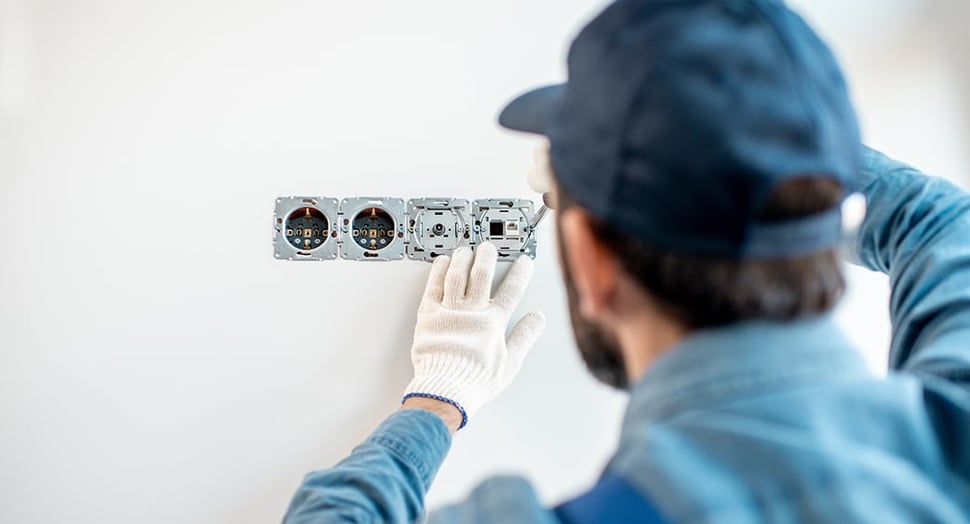 At-home EV charging provides EV owners benefits — from hygiene and cleanliness to efficiency and convenience, increasing the popularity for installing home charging stations.
At-home EV charging provides EV owners benefits — from hygiene and cleanliness to efficiency and convenience, increasing the popularity for installing home charging stations.
The rise of COVID-19 has caused major changes to electric vehicle (EV) driving and charging patterns. Two important trends stand out for EV owners: An increase in home charging due to the pandemic, but also growth in the availability of public charging networks.
Let’s take a look at the shifting charging patterns and why home charging is becoming more popular among EV owners.
COVID changing EV charging trends
A recent survey conducted by PlugShare Research conducted over the Labor Day weekend sheds some light on the issue. According to their data, 53% of U.S. EV drivers said they charge their cars in public less now than they did before the pandemic. These drivers also accounted for a staggering 67% decline in public charging compared to before pre-pandemic levels.
An overall decline in driven miles factors into these findings. The survey also found that 74% of respondents said they’re driving fewer total miles due to COVID-19 compared to what they drove prior to March 2020. This accounted for a 56% dip in average miles driven.
Collectively, these numbers also support the survey’s key findings: The number of EV drivers who do most of their charging at home jumped to 84% from its pre-pandemic level of 75%.
Even in the best of times, EV charging stations are not bastions of cleanliness. A BusBud study found that public EV chargers have an average of 7,890 colony forming units (CFUs) per square inch. A CFU how microbiologists estimate the number of viable bacteria and germs in a sample. To put this in comparison, money has an average 5.2 CFU/sq, the bottom of a purse has 9.7 CFU/sq and a household toilet seat contains 172 CFU/sq.
This risk is further amplified by the current pandemic. The coronavirus that causes COVID-19 can last up to three days on stainless steel or plastic surfaces, according to a study from the National Institutes of Health (NIH) and the Centers for Disease Control (CDC). Many EV chargers are made of these materials. Charging at home allows you to maintain social distancing, and it doesn’t put you at risk of exposing yourself to germs or the coronavirus.
Despite this significant decline in EV drivers charging at public stations, the past six months have seen a steady increase in the number of DC fast-charging openings as well as announcements for planned openings. This comes on the heels of a surge in EV drivers.
“While post-COVID-19 EV driving is way down, we’re actually seeing a record number of registrations for our PlugShare EV driver app,” said PlugShare’s Chief Strategy Officer Norman Hajjar. “Worldwide registrations were up 56% in August versus last year, and we just crossed the 1 million registered driver mark.”
Although miles driven are decreasing, more people continue to turn to EV for their mobility needs. Let’s take a look at some other reasons why EV drivers should consider an at-home EV charger.
Additional reasons for the rise in charging at home
At-home EV charging provides other long-term benefits beyond the immediate concerns regarding the coronavirus.
For one, charging at home allows you to more efficiently and conveniently keep your vehicle charged. You can program parameters for charging around your own needs and on your own terms, when you actually need it. This eliminates trips to the local charging station and having to wait around for the battery to fill up. A home-charging station also lets you replenish the battery up to 50% to 80% on a daily basis, which helps maintain the battery’s longevity and overall health.
You can end up paying less for power over time. Often, public charging uses a pay-as-you-go model. These payment methods typically involve per-minute costs, pricing per charging session or per kilowatt-hour (kWh) and even a charging idle fee. Since the public charging site owner frequently sets these prices themselves, you have no way to know exactly how much you’ll be paying on every visit. Compare this to an at-home EV charger, which is generally lower than public charging costs, especially during off-peak hours at night time.
However, despite the pros and growth of at-home charging, many EV drivers are confused about how to go about installing one. Twenty-nine percent of respondents to a June 2020 HomeServe survey expected the local utility to assist with home charging set-up and installation. Meanwhile, 27% of respondents thought it was up to the original equipment manufacturer (OEM) to help them understand how to set-up and install an at-home charger at home.
Want to learn more about why at-home EV charging is becoming more popular and how to get go about setting up and installing a home-charging station?
Reach out to the electromobility pros at Webasto today.
Sources:
https://newsroom.plugshare.com/plugshare-research-public-charging-by-us-ev-drivers-has-fallen-dramatically-since-the-covid-19-pandemic
https://www.busbud.com/blog/gas-station-germs-guzzling-grime-by-the-gallon/
https://www.nih.gov/news-events/news-releases/new-coronavirus-stable-hours-surfaces
https://www.homeserveutility.com/battery-electric-vehicle-level-2-charger-home-ev-charger/

